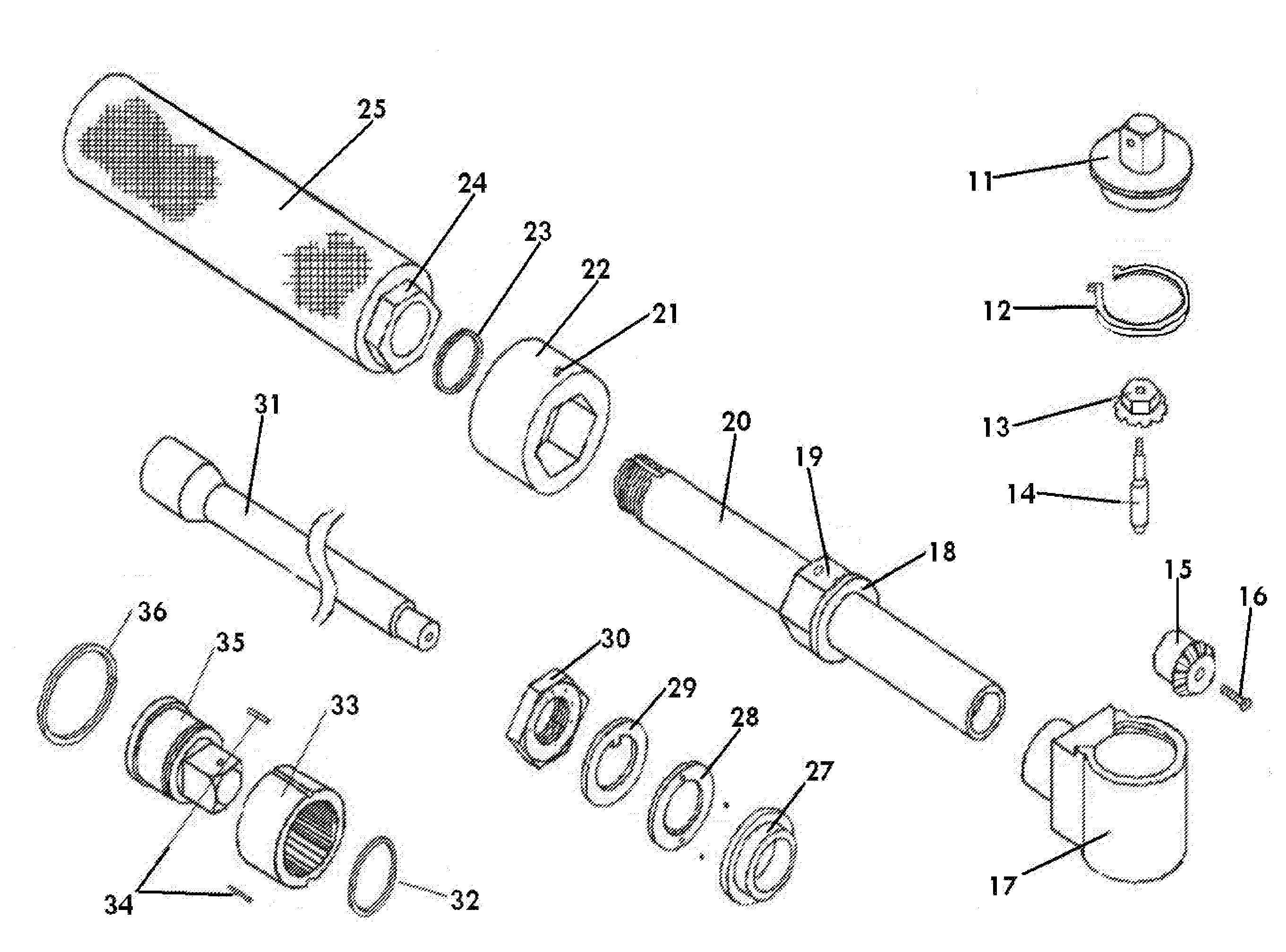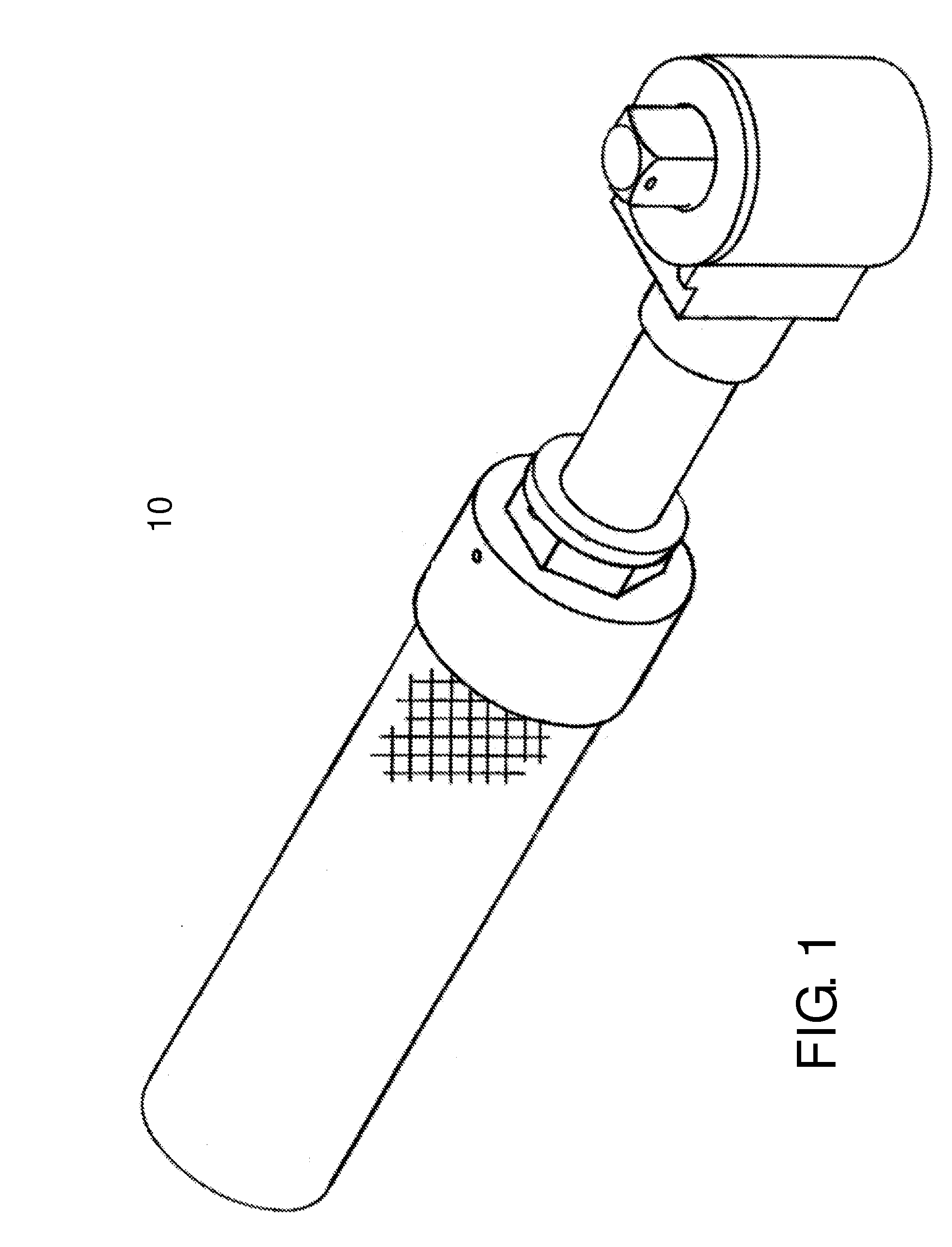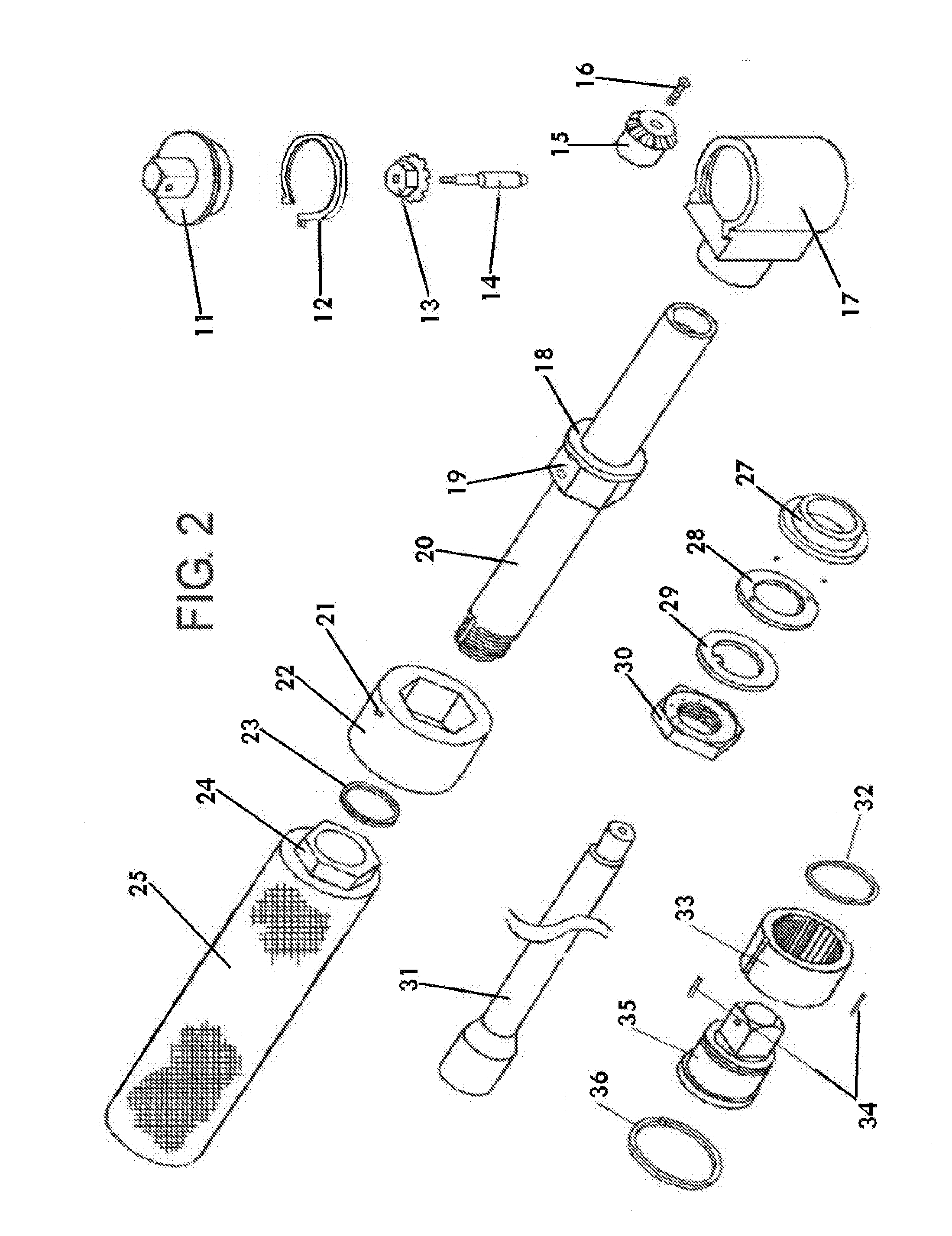Double action socket wrench
a socket wrench and double-action technology, applied in the field of socket wrenches, can solve the problems of limited success of these efforts, high number of custom parts that can have a detrimental impact on assembly and production, and wrenches of great complexity, so as to reduce friction and drag, and the effect of increasing the ratio of handle to sock
- Summary
- Abstract
- Description
- Claims
- Application Information
AI Technical Summary
Benefits of technology
Problems solved by technology
Method used
Image
Examples
Embodiment Construction
[0029]Drawings and descriptions combine to refer to socket wrench 10 (FIG. 1) that is the invention. Anterior refers to end nearest the right-hand margin as drawn. Posterior refers to the distal end.
[0030]Three of the main parts of socket wrench 10 are body 20 (FIGS. 2 and 4), head 17 and handle 25. Head 17 is either permanently mounted in a fixed position to the anterior end of body 20 (FIGS. 1,2,3 and 4) or is an integral part of body 20 (FIGS. 5 and 6). Handle 25 is rotatably mounted to the posterior end of body 20.
[0031]Body 20, is an elongated tube, having a hollow, circular interior section running through its length, open at both ends. Posterior end of body 20 has as some of its exterior portions, a threaded segment corresponding to lock nut 30 and a grooved keyway corresponding to inside tab washer 29. The anterior end has as some of its portions, an enlarged circular opening that forms a cavity corresponding to the hub of second miter gear 15. Body 20 also has as one of its...
PUM
 Login to View More
Login to View More Abstract
Description
Claims
Application Information
 Login to View More
Login to View More - R&D
- Intellectual Property
- Life Sciences
- Materials
- Tech Scout
- Unparalleled Data Quality
- Higher Quality Content
- 60% Fewer Hallucinations
Browse by: Latest US Patents, China's latest patents, Technical Efficacy Thesaurus, Application Domain, Technology Topic, Popular Technical Reports.
© 2025 PatSnap. All rights reserved.Legal|Privacy policy|Modern Slavery Act Transparency Statement|Sitemap|About US| Contact US: help@patsnap.com



